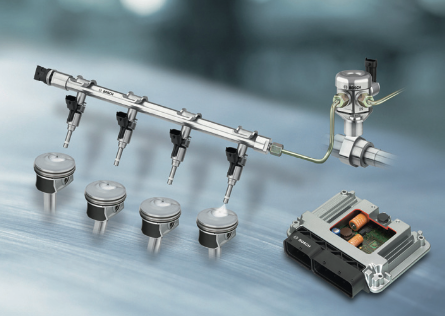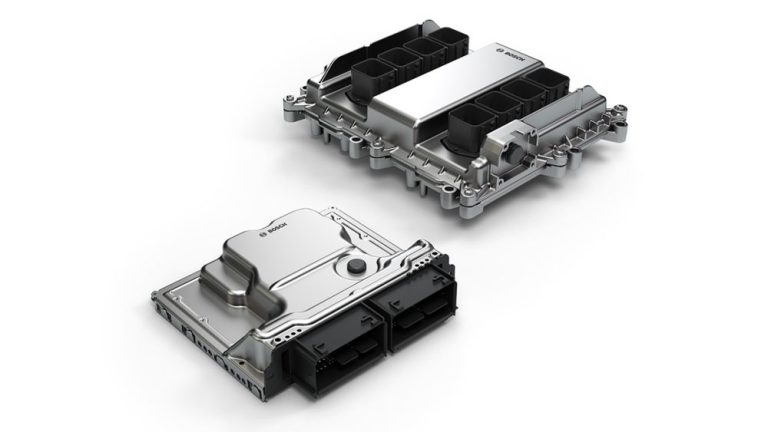Electronic Control Units (ECUs), rails, and injectors are essential components of modern engines. These parts work together to ensure that your engine runs smoothly, efficiently, and safely. In this blog, we’ll take a closer look at each of these components and how they work together to keep your engine running at its best.
Electronic Control Units (ECUs)
The Electronic Control Unit (ECU) is the brain of the engine. It is a computer that controls the engine’s operation by monitoring various sensors throughout the vehicle and adjusting engine performance accordingly. The ECU receives signals from sensors such as the oxygen sensor, throttle position sensor, and coolant temperature sensor to determine the ideal air/fuel mixture, ignition timing, and other engine parameters.
The ECU also controls other aspects of the engine’s performance, such as the idle speed, emissions, and fuel efficiency. It does this by sending signals to other components such as the fuel injectors and the ignition system.
Rails
The fuel rail is a metal pipe that runs along the length of the engine and supplies fuel to the fuel injectors. It is usually mounted on the engine and connected to the fuel pump and the fuel pressure regulator.
The fuel rail distributes the pressurized fuel from the fuel pump to the fuel injectors. The pressure in the fuel rail is controlled by the fuel pressure regulator, which ensures that the fuel pressure remains consistent regardless of engine load or speed.
Injectors
The fuel injectors are responsible for delivering the correct amount of fuel to the engine. They are small nozzles that spray fuel into the engine’s combustion chamber at a precise time and in a specific pattern. The injectors are controlled by the ECU, which determines when and how much fuel should be injected.
The injectors use a solenoid valve to control the flow of fuel. When the ECU sends a signal to the injector, the solenoid valve opens, allowing fuel to flow through the nozzle and into the engine’s combustion chamber. The amount of fuel injected is determined by the length of time the solenoid valve is open.
Conclusion
The Electronic Control Unit (ECU), fuel rails, and injectors work together to ensure that your engine runs smoothly and efficiently. The ECU monitors various sensors throughout the vehicle and adjusts the engine’s performance accordingly. The fuel rail distributes pressurized fuel to the injectors, and the injectors deliver the correct amount of fuel to the engine at the right time.
Understanding these components and how they work together is essential for maintaining and troubleshooting modern engines. Regular maintenance, such as cleaning the injectors and replacing the fuel filter, can help ensure that your engine runs at its best for years to come.
Sure, I’d be happy to provide more information on each of these components and their role in engine performance.
Electronic Control Units (ECUs)
ECUs have become increasingly sophisticated over the years and are now responsible for controlling a wide range of engine functions. They can adjust fuel delivery, ignition timing, and valve timing, among other things. In addition, many modern ECUs can store error codes that help diagnose issues with the engine.
ECUs use a variety of algorithms and maps to determine the ideal operating conditions for the engine. For example, an air/fuel map tells the ECU how much fuel to inject based on the amount of air entering the engine. The ECU also uses feedback from sensors to adjust engine performance in real-time.
Fuel Rails
Fuel rails are typically made of metal and are designed to withstand high pressure. The fuel pressure regulator ensures that the fuel pressure remains constant regardless of the engine’s operating conditions.
Some fuel rails are designed to dampen the fuel pressure spikes that can occur during rapid acceleration or deceleration. This helps to reduce stress on the fuel injectors and other engine components.
Injectors
Fuel injectors are essential to the proper operation of a modern engine. They must deliver the correct amount of fuel to the engine at the right time to ensure that the engine runs smoothly and efficiently.
The timing and duration of the fuel injection are critical factors that can affect engine performance. A malfunctioning injector can cause a variety of issues, including poor fuel efficiency, rough idling, and engine misfires.
One common issue with fuel injectors is clogging. Over time, the nozzles can become blocked with debris or deposits, which can restrict fuel flow and reduce engine performance. Regular maintenance, such as cleaning or replacing the injectors, can help prevent this issue.

In conclusion, the ECU, fuel rails, and injectors are crucial components of modern engines. Understanding how they work together can help you diagnose issues with your engine and ensure that it runs smoothly and efficiently. Regular maintenance and troubleshooting can help prevent issues and prolong the life of your engine.
Advantages of Electronic Control Units (ECUs), Fuel Rails, and Injectors:
- Improved Engine Performance: The integration of ECUs, fuel rails, and injectors can result in improved engine performance, increased power, and better fuel efficiency.
- Precise Control: These components can provide precise control over the amount of fuel delivered to the engine, the timing of ignition, and other critical engine parameters. This can lead to better engine response, smoother operation, and improved emissions.
- Better Diagnostics: Modern ECUs can store error codes that help diagnose issues with the engine. This can help mechanics identify problems more quickly and accurately.
- Increased Reliability: The use of these components can result in increased engine reliability and longevity. The precise control over fuel delivery and engine timing can reduce wear and tear on engine components and extend the life of the engine.
Disadvantages of Electronic Control Units (ECUs), Fuel Rails, and Injectors:
- Complexity: The integration of these components can make engine systems more complex, which can make repairs more difficult and expensive.
- Cost: The cost of these components can be high, especially for high-performance engines or vehicles with advanced electronic systems.
- Maintenance: The maintenance requirements for these components can be high, and failure to maintain them properly can lead to issues such as clogged injectors or damaged fuel rails.
- Compatibility: Not all ECUs, fuel rails, and injectors are compatible with all engines or vehicles. Compatibility issues can result in poor engine performance, reduced fuel efficiency, and other problems.
Overall, the advantages of ECUs, fuel rails, and injectors outweigh the disadvantages for most modern engines. The improved performance, reliability, and diagnostics provided by these components make them essential for modern engine management systems.










